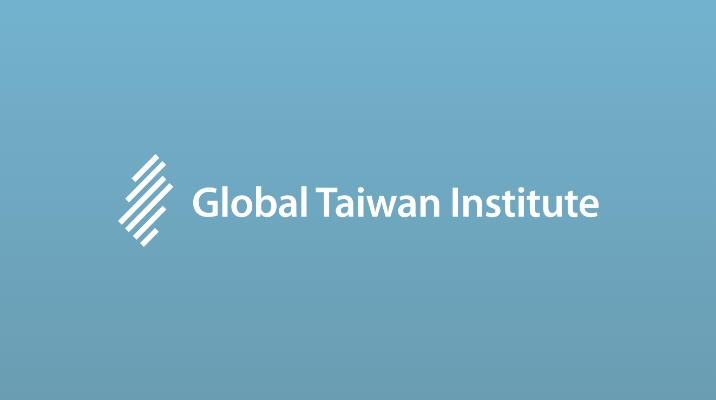Throughout Taiwan’s history, the nation has continuously faced encroachment from China. Moreover, China’s rise as a hegemonic power over the past quarter century has allowed the country to leverage forms of power and statecraft to force global adherence to its “One-China Principle,” which claims that the People’s Republic of China (PRC) is the government that represents all of China, including Taiwan. To combat China’s overreach in the region, Taiwan has implemented various policy strategies to increase its international visibility, with the most notable being the New Southbound Policy (NSP, 新南向政策). Since the creation of the NSP, Taiwan has forged multiple partnerships with 18 countries in the Asia/Oceania region. By outlining the NSP model and the modern challenges China imposes on Taiwan, this article argues that Taiwan’s NSP is critical for achieving its economic sovereignty by decreasing dependence on trade with China and diversifying its regional trade partnerships.
Overview of Taiwan’s New Southbound Policy Model
Lai Ching-te (賴清德) emphasized his commitment to enhance relations with specific countries in South and Southeast Asia under Tsai Ing-wen’s (蔡英文) New Southbound Policy. As part of this foreign policy strategy, Lai has focused on the promotion of six core industry areas: 1) information and digital industries; 2) cybersecurity; 3) precision health; 4) renewable energy; 5) national defense and strategic industries; and 6) strategic stockpile industries. Lai’s foreign policy goals are not unique—throughout Taiwan’s history, almost every president has tried to advance strategic relations and partnerships with the southern part of the Indo-Pacific region. The Lai Administration’s current NSP framework is an evolution of the creation by his predecessor, Tsai Ing-wen, of the NSP program. However, the question remains: Why must Taiwan pursue a New Southbound Policy?
China’s International Pressure Over Taiwan
As a regional hegemon, China has used its economic superiority over Taiwan and pushed other countries within the region to abide by the “One-China Principle.” Much of China’s coercion has been leveraged through “dollar diplomacy” (also known as “checkbook diplomacy”), which refers to when China offers investment incentives and development assistance to regional neighbors as long as the receiving nations adopt Chinese positions, including the “One-China Principle.” From a global standpoint, China has successfully stripped Taiwan’s international status through this mechanism. For instance, in 2002—and again in 2024—Taiwan accused China of “buying” Nauru’s allegiance, luring the country away twice from a diplomatic partnership with Taiwan.
|
Countries Originally Allied with Taiwan |
Year these Countries Severed Ties with Taiwan |
Years these Countries Declared Relations/Partnerships with China |
|
Republic of Kiribati |
2019 |
2019 |
|
Nicaragua |
2021 |
2023 |
|
Nauru |
2002, 2024 |
2002, 2024 |
|
Honduras |
2023 |
2023 |
|
Republic of El Salvador |
2018 |
2018 |
|
Democratic Republic of São Tomé and Príncipe |
2016 |
2017 |
|
Dominican Republic |
2018 |
2018 |
|
Republic of Panama |
2017 |
2017 |
|
Solomon Islands |
2019 |
2019 |
Table: Countries Originally Allied With Taiwan and the Years They Severed Ties with Taiwan and Declared Relations with China. (Table Sources: See [1])
On a global scale, China has used its importance to the global economy and the countries it supports to continue to isolate Taiwan from the international community, particularly by distorting United Nations Resolution 2758. Simultaneously, China has developed various foreign initiatives, such as the Belt and Road Initiative (BRI, formerly known as “One Belt, One Road,” 一帶一路), to increase its economic power worldwide and undermine Taiwan’s New Southbound Policy goals by using its larger market to forge partnerships and establish development projects with other Southeast Asian countries. Overall, China’s aggressive dollar diplomacy has severely undercut Taiwan’s efforts to forge international partnerships by poaching Taiwan’s formal diplomatic partners, and limiting Taiwan’s official recognition in international and multilateral organizations.

Image: Then-President Tsai Ing-wen holds a meeting with journalists from India, Indonesia, Malaysia, the Philippines, Singapore, and Thailand to discuss Taiwan’s New Southbound Policy. (May 5, 2017). (Image source: Wikimedia Commons / ROC Presidential Office)
Spearheading The New Southbound Policy
Given the above-mentioned challenges, Taiwan’s goal should be to reduce its dependence on China’s trade by establishing itself as a vital partner in the global economy. The New Southbound Policy is critical for Taiwan because it is Taiwan’s first step towards achieving this objective, creating an opportunity for Taiwan to spread its economic influence across nearby countries. In 2024, the Taiwanese government reported the lowest decrease of exports to China and Hong Kong in five-years, with a 1.1 percent reduction from 2023, while Taiwanese exports to NSP partner countries within the ASEAN bubble rose to new highs, increasing by 15.1 percent that year. These trends signify the success of the NSP towards Taiwan’s diversification of export partners while—albeit slowly—decreasing dependence on Chinese exports. However, there are still further steps that Taiwan must take to develop pragmatic partnerships with individual countries in the NSP. China’s hegemonic presence in the region continues to be a formidable obstacle to Taiwan’s goal of economic sovereignty. As a result, these policy proposals will outline how the Taiwanese government can improve its NSP program while keeping the current status quo in cross-Strait relations.
Developing Pragmatic Partnerships with Individual Countries
Taiwan should pragmatically examine each country’s current situation within the range of the NSP’s guidelines. With China currently dominating the Indo-Pacific region, Taiwan must usurp this influence by establishing partnerships near the home front. Although approximately 18 partner countries claim to be part of the NSP, each country’s level of engagement with Taiwan varies, with some countries maintaining limited or less active partnerships with Taiwan. Additionally, only seven of Taiwan’s top 20 trading partners are part of the NSP. Taiwan should prioritize strengthening economic and strategic alliances with the Philippines and India. Both countries are not only partners of the NSP program, but are also two nations that are in Taiwan’s top 20 trading partners and likewise face geopolitical tensions with China.
The Philippines
The South China Sea is a region that constantly experiences maritime disputes. Although Vietnam, the Philippines, Brunei, Indonesia, and Malaysia all have maritime disputes with China, of these countries only a few have actively spoken out against China–with the most vocal being the Philippines. In 2016, the Philippines brought a case before the arbitral tribunal at The Hague against China for violating the United Nations Convention on the Law of the Sea (UNCLOS). Since then, the tensions between the Philippines and China have significantly risen, with current President Ferdinand Marcos Jr. publicly warning China against continuing to violate the Philippines’ claimed borders in the South China Sea.
Another reason that Taiwan must commit to furthering its partnership with the Philippines is because of the Philippines’ openness to cooperating with Taiwan. On April 15, the Philippine government passed Memorandum Circular 82, which eased travel restrictions between Taiwanese and Filipino officials. This policy reversed the Philippines’ 1987 Executive Order No. 313, which had previously heavily restricted Filipino travel to Taiwan. Moreover, the Philippines has sought out Taiwanese corporations within the semiconductor industry—such as Taiwan Semiconductor Manufacturing Company (TSMC, 台灣積體電路製造公司) and United Microelectronics Corporation (UMC, 聯華電子)—as partners to expand the Philippines’ domestic semiconductor industry.
With current disputes in the South China Sea at an all-time high, Taiwan should leverage the rising tensions between the Philippines and China to further relations between both countries. Potential partnerships include expanding job outsourcing between the two countries and growing the renewable energy industry. In 2024, Taiwanese employers submitted 15,000 job orders to the Philippine government to be filled by Filipino workers, with about 3,000 job vacancies in the semiconductor industry alone. Another promising development is Taiwan’s plan to import green energy from the Philippines. By constructing undersea cables between both countries, Taiwan can fulfill its transition from nuclear energy to sustainable energy sources and eventually reach its 2050 net-zero goal. The Philippines is not only vocal about its shared territorial disputes with China, but it is one of the few countries that has both vocalized its discontent against China and expressed a willingness to cooperate with Taiwan.
India
India has the highest GDP out of all of Taiwan’s NSP partners and has steadily increased its trade with Taiwan, growing from USD 4.7 billion in 2016 to USD 10.9 billion in 2023. India is a rising economic power in the region, with a market potentially on par with China, which makes it an attractive economic partner for Taiwan.
The current turmoil between China and India could also create opportunities for Taiwan to create stronger partnerships with India. Two factors that account for the recent decline in India-China relations are: 1) China’s military support of Pakistan; and 2) Sino-Indian border disputes. India and Pakistan have a long-standing territorial dispute over Kashmir, with China funding 81 percent of Pakistan’s imported weapons supply. Despite April’s escalation in tensions ending in a ceasefire, China’s military support of Pakistan has caused distrust of China among Indian officials. Additionally, like in the South China Sea, both India and China have engaged in minor conflicts throughout the past decade over their shared border in the Himalayan Mountain Range, with the most recent reported conflict on the border occurring in 2020.
The current Modi Administration has preferred to lean towards the United States when it comes to cooperation efforts and forging bilateral initiatives. As of February, India and the United States launched the “US-India COMPACT (Catalyzing Opportunities for Military Partnership, Accelerated Commerce and Technology) for the 21st Century.” India’s current tilt towards the West could create opportunities for India to cooperate with Taiwan. Current cooperation between India and Taiwan has increased the growth rate in total trade by 29 percent between 2023 and 2024. As of May 1, the current 2025 total trade has already surpassed the total annual trade amount in 2020.
Due to India’s vast market, India can be another way for Taiwan to decrease its dependence on trade with China. Considering that India’s current surplus in rare earth elements (REE) is crucial in developing clean energy and defense technologies, India’s defense and renewable energy industries are prime opportunities for Taiwan-India trade. Not only are there industries critical to Taiwan’s goals of achieving net-zero energy totals, but they are also critical for strengthening Taiwan’s domestic resilience. By advancing these industries, Taiwan can both improve relations with a high-GDP-producing NSP partner and decrease Taiwan’s dependence on China.
China’s hegemonic rise and influential dominance over the Indo-Pacific region have limited Taiwan’s ability to forge partnerships with nearby countries. The New Southbound Policy is vital to combating these issues and allows Taiwan to diversify its domestic markets to regional countries. Taiwan should advance its partnerships with countries that share geopolitical tensions with China, such as the Philippines and India.
The main point: Taiwan must prioritize enhancing regional partnerships through its New Southbound Policy to mitigate its economic dependence on China. Furthermore, Taiwan should continue to leverage shared geopolitical concerns—such as the Philippines’ and India’s tensions with China—to find new areas of cooperation with NSP partner countries. Both countries offer expansion opportunities in Taiwan’s critical markets, such as the renewable energy and defense industries.
[1] Data compiled from: Bock, Jonah, and Haley Parilla; Lai, Michelle. “Honduras Ditches Taiwan for China.” Foreign Policy Research Institute, October 6, 2023. https://www.fpri.org/article/2023/10/honduras-ditches-taiwan-for-china/#:~:text=Honduras’%20decision%20to%20cut%20ties,of%20China’s%20diplomatic%20grand%20strategy; Lyons, Kate. “Taiwan Loses Second Ally in a Week as Kiribati Switches to China.” The Guardian, September 20, 2019. https://www.theguardian.com/world/2019/sep/20/taiwan-loses-second-ally-in-a-week-as-kiribati-switches-to-china; “Honduras Cuts Ties with Taiwan, Opens Relations with China.” Al Jazeera, March 26, 2023. https://www.aljazeera.com/news/2023/3/26/honduras-cuts-diplomatic-ties-with-taiwan; Ellis, Evan. “China and El Salvador: An Update.” CSIS, March 22, 2021. https://www.csis.org/analysis/china-and-el-salvador-update; An, David. “The Geopolitics of Losing Diplomatic Allies: The Case of Sao Tome and Principe.” Global Taiwan Institute, March 22, 2017. https://globaltaiwan.org/2017/03/the-geopolitics-of-losing-diplomatic-allies-the-case-of-sao-tome-and-principe/; “Panama Cuts Ties with Taiwan in Favour of China.” BBC News, June 13, 2017. https://www.bbc.com/news/world-latin-america-40256499; “Taiwan Loses Diplomatic Ally as Dominican Republic Switches Ties to China.” BBC News, May 1, 2018. https://www.bbc.com/news/world-asia-china-43958849.




